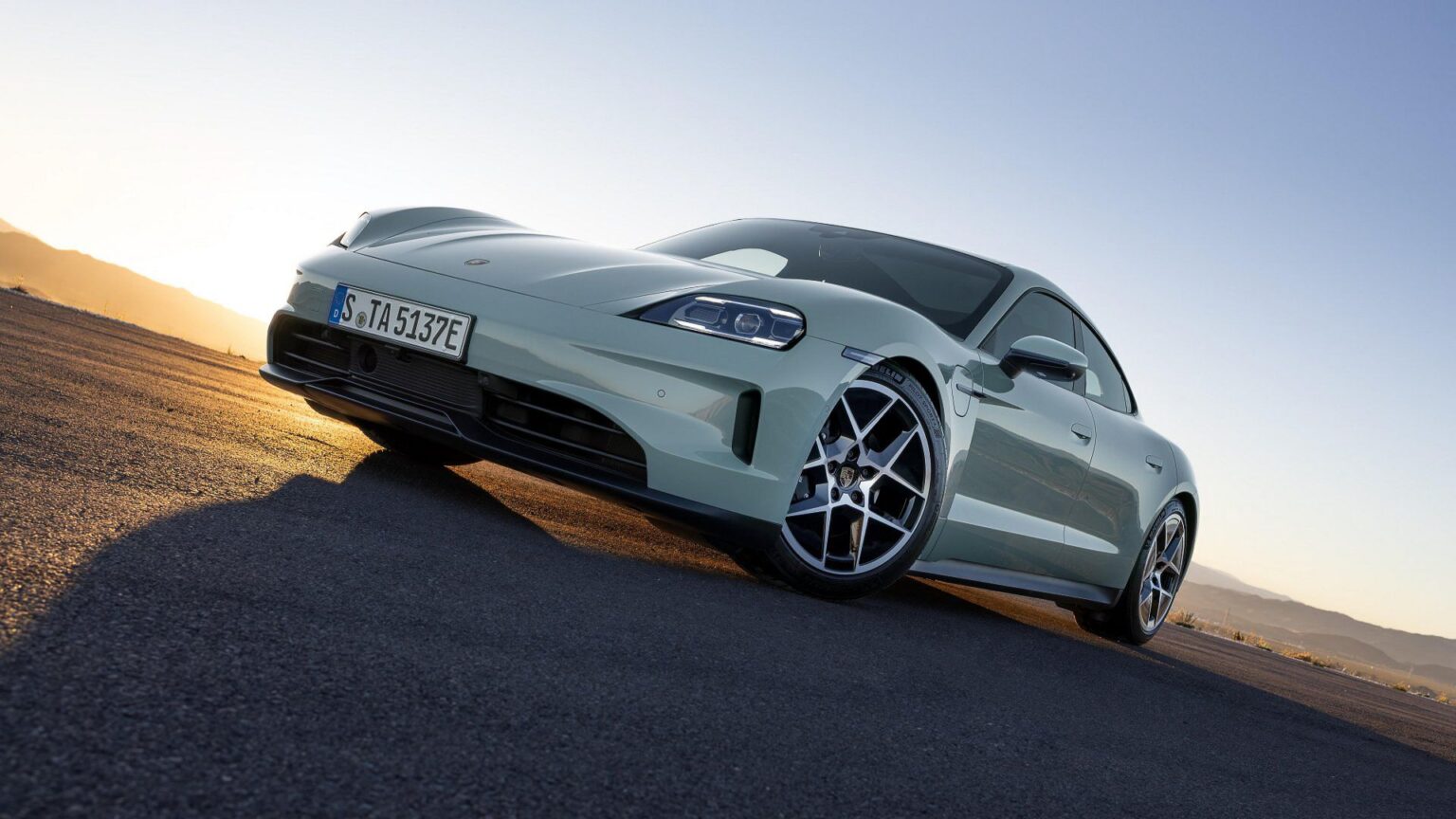Seemingly more and more of Porsche’s customers are making the leap to full-electric vehicles according to the German brand’s sales figures. In the first quarter of 2025, 71,470 Porsches were sold worldwide, of which 38.5 percent were electrified and just over a quarter – 25.9 percent – were full EVs. Don’t worry though. Despite a strong start to the year for its electrified models, Porsche will not be binning its internal combustion models anytime soon.
“We will continue to meet the diverse requirements of our customers in the future with a product strategy that includes all three drive variants for two-door sports cars, sports sedans and sports SUVs well into the 2030s,” Porsche executive board member Matthias Becker explained in an official statement. Currently, the Macan 4 Electric and the Taycan are the only fully-electric models in Porsche’s portfolio.
Moreover, while significant markets like Europe (particularly Germany) and China recorded losses between January and March so far this year, North America enjoyed a particularly strong start to the year with completed customer deliveries vaulting over the 20K mark.
Way More Than Half Of All Macans Sold Were Electric
Of the six models Porsche currently sells, the Panamera sedan recorded the strongest growth in sales in Q1 with 7,769 sales, a 27 percent increase compared with the same period last year. The mid-sized Macan SUV, however, continued to be Porsche’s strongest performing model with 23,555 confirmed customer deliveries, 14 percent more than in January to March 2024. Tellingly, of those 23K-plus models sold, more than 60 percent of them – 14,185 vehicles – were the all-EV Macan 4 Electric, almost two-thirds more than the 9,370 combustion-engined examples Porsche currently on sale outside the EU. The brand’s official statement however does not specify how this 9K-plus figure is broken down between the Macan, the Macan S and the Macan Turbo.
The Cayenne, meanwhile, was the second-strongest seller on Porsche’s books with 20,055 confirmed deliveries. Strangely though, and owing to what the company calls “a catch-up effect” owing to delays supplies and shipping that briefly improved sales rapidly in Q1 2024, sales of Porsche’s halo SUV are actually down 22 percent.
“All three drive variants for two-door sports cars, sports sedans and sports SUVs well into the 2030s.”
Porsche’s flagship 911 also recorded a 12-percent drop in Q1 2025 with 11,390 units sold, though the brand puts much of this down to “strong final sales of the predecessor model” – the 992 generation – towards the end of last year ahead the updated 992.2’s arrival for 2025, and “staggered product introduction of the new derivatives.” Orders for the returning Carrera S coupe, for example, only opened in January, with deliveries not scheduled to start until spring.
Specifying “limited model availability due to European cybersecurity regulations” that is said to have affected parts supplies, deliveries of both the 718-generation Boxster and Cayman dropped 22 percent to a combined 4,498 units in Q1 2025 (again, Porsche has not specified which model did most of the heavy lifting). It should also be pointed out that these results follow 23,670 collective sales for the Boxster/Cayman in 2024, their best year since 2016.
The all-electric Taycan, meanwhile, and its available models, a Turbo GT example of which recently set a new EV production lap record around the home of the Formula 1 Brazilian Grand Prix, continued its steady sales progress. 4,203 examples – just 33 fewer than in Q1 in 2024 – were sold between January and March.
Q1 2025 Porsche Sales
|
Q1 2024 |
Q1 2025 |
|
|
Macan |
20,576 |
20,698 |
|
Cayenne |
28,025 |
20,055 |
|
Panamera |
6,139 |
7,769 |
|
911 |
12,892 |
11,390 |
|
718 Boxster/Cayman |
5,772 |
4,498 |
|
Taycan |
4,236 |
4,203 |
North American Sales up 37 Percent In Q1 2025; Worldwide Down Eight Percent
North America proved the strongest market worldwide for Porsche between January and March (the United States enjoyed a whopping 40.6-percent increase in Q1 alone), and by some considerable margin. 20,698 deliveries were completed in North America, a whopping 37 percent over the 15,087 units sold during Q1 in 2024. While you could be forgiven for thinking Stuttgart’s crest is enjoying a resurgence in North America, don’t get too excited, as “import-related delays” of models ordered towards the end of last year are cited as a major contributing factor for this strong growth. Indeed, North American sales figures for Q1 2023 saw 19,651 customer deliveries completed.
“20,698 deliveries were completed in North America, a whopping 37 percent over the 15,087 units sold in Q1 last year.”
Only one other sector – the nebulously titled ‘Overseas and Emerging Markets’ – is in the black so far in 2025, the 15,789 collective sales a six-percent rise over the 14,895 sold last year. Germany, the rest of Europe, and China all reported losses at 34 percent, 10 percent, and 42 percent respectively. Again, though, Porsche puts poor figures for both Europe and Germany down to “a disproportionately strong prior-year period due to catch-up effects” owing to shipping delays, model changes, and the aforementioned cybersecurity issues.
‘Worldwide’ sales were also down eight percent, the start of a potentially worrying trend. While all markets bar China saw increased sales last year, ‘worldwide’ sales in 2024 had actually dropped three percent compared with total sales in 2023, with 310,718 sales vs. 320,221.
Q1 2025 Sales – Market
|
Q1 2024 |
Q1 2025 |
Difference |
|
|
Worldwide |
77,640 |
71,470 |
-8% |
|
Germany |
11,274 |
7,495 |
-34% |
|
North America |
15,087 |
20,698 |
+37% |
|
China |
16,340 |
9,471 |
-42% |
|
Europe (ex. Germany) |
20,044 |
18,017 |
-10% |
|
Overseas/Emerging Markets |
14,895 |
15,789 |
+6% |
Read the full article here


